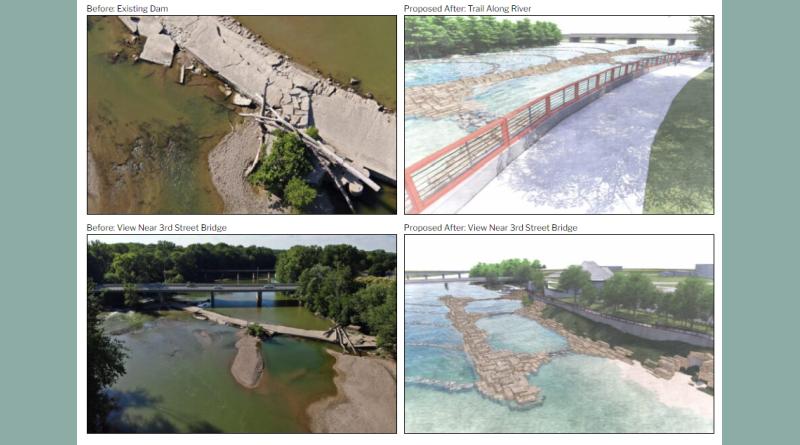Riverfront project gains green light from U.S. Army Corps of Engineers
Columbus has the go-ahead from the U.S. Army Corps of Engineers for work to improve East Fork White River downtown. Now redevelopment officials will hire a consultant to see what benefits the improvements would bring from the long-delayed project.
The Columbus Redevelopment Commission approved a $44 thousand contract this week to determine the economic impact of the proposed riverfront improvement efforts, called the “Our River… Our Riverfront.” project. The work will be done by James Lima Planning & Design out of New York City.
The proposal from the Lima group outlines an economic benefits analysis report and the production of a policy report outlining the return on public investment. The group will conduct stakeholder interviews and gather case studies to show possible benefits. The company expects to complete the work in two months.
Before the commission discussion began, Heather Pope, the city’s redevelopment director, pointed out that the city has just received the permit from the Corps of Engineers for the work in the river. The next step will be the hiring of a construction manager for the project, Pope said. The city is going to put out a request for proposals for that role.
But the city also wants to take a fresh look at the benefits from the project, Pope said.
Work on the project has been going on for more than six years. Pope said that with the large project and the associated large costs of the project, it would be beneficial for the city to take another look at the benefits of the project.
One of the givens is that the city will remove the low-head dam that sits between the two downtown river bridges. The dams have been found to be dangerous to those who get trapped in their currents and detrimental to the environment. And the Columbus dam is failing, allowing the river to eat into the former dump site on the riverbank and exposing wastewater pipes.
Pope said that the city originally estimated the cost of the project at just under $9 million and has received more than $2 million in grants toward the work.

